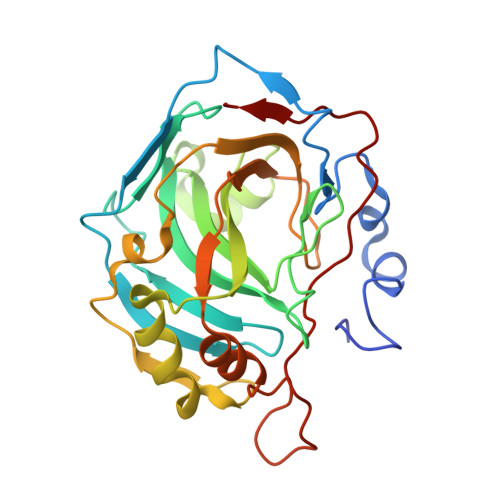Exploring benzoxaborole derivatives as carbonic anhydrase inhibitors: a structural and computational analysis reveals their conformational variability as a tool to increase enzyme selectivity.
Langella, E., Alterio, V., D'Ambrosio, K., Cadoni, R., Winum, J.Y., Supuran, C.T., Monti, S.M., De Simone, G., Di Fiore, A.(2019) J Enzyme Inhib Med Chem 34: 1498-1505
- PubMed: 31423863
- DOI: https://doi.org/10.1080/14756366.2019.1653291
- Primary Citation of Related Structures:
6RVF, 6RVK, 6RVL, 6RW1 - PubMed Abstract:
Recent studies identified the benzoxaborole moiety as a new zinc-binding group able to interact with carbonic anhydrase (CA) active site. Here, we report a structural analysis of benzoxaboroles containing urea/thiourea groups, showing that these molecules are very versatile since they can bind the enzyme assuming different binding conformations and coordination geometries of the catalytic zinc ion. In addition, theoretical calculations of binding free energy were performed highlighting the key role of specific residues for protein-inhibitor recognition. Overall, these data are very useful for the development of new inhibitors with higher selectivity and efficacy for various CAs.
Organizational Affiliation:
Istituto di Biostrutture e Bioimmagini, Consiglio Nazionale delle Ricerche , Naples , Italy.
















